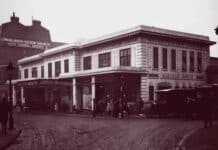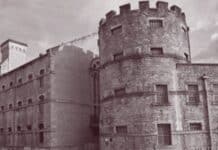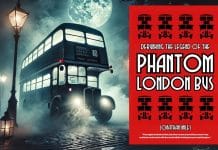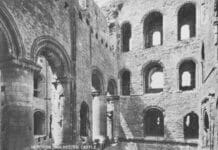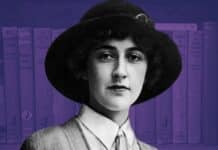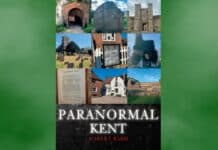London’s iconic Westminster Bridge has long been the centre of chilling depictions of fictional nightmares and grim realities, writes DAVD TURNBULL
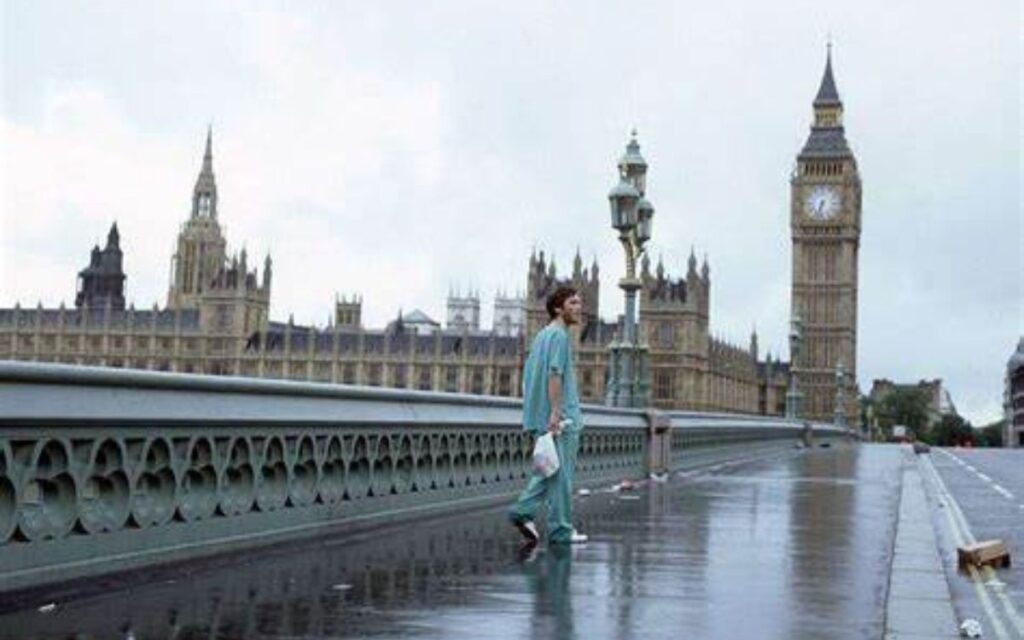
On 31 July 1802, the poet William Wordsworth and his sister Dorothy, crossed Westminster Bridge, having set off on the first leg of a journey to Calais in France. It was a wonderful summer’s morning, as described by Dorothy in her journal:
“We mounted the Dover Coach at Charing Cross. It was a beautiful morning. The City, St Pauls, with the river & a multitude of little boats, made a most beautiful sight as we crossed Westminster Bridge. The houses were not overhung by their cloud of smoke & they were spread out endlessly, yet the sun shone so brightly with such a pure light that there was even something like the purity of one of nature’s own grand spectacles.”
For William, the scene was akin to his famous Field of Golden Daffodils moment, inspiring him to write the aptly titled sonnet Composed upon Westminster Bridge which starts with the line Earth has nothing to show more fair.
The original Westminster Bridge, the one which they passed over, was built in the mid 18th century, under the supervision of the Swiss engineer Charles Labelye. The bridge opened on 18 November 1750. The modern version of the bridge. The one which stands there today was designed by Thomas Page and opened on 24 May 1862.
Had the Wordsworth siblings been crossing the Thames at Westminster over a century later they may have encountered an entirely different type of scene – one of devastation caused by marauding Triffids, Dalek invaders, or flesh eating Zombies.
Westminster Bridge – an iconic landmark
Westminster is one of London’s most iconic bridges, with the Houses of Parliament and Big Ben on the Westminster side and, more recently, the huge tourist attraction of the London Eye on the Southbank side. As such it has frequently provided a backdrop for film directors seeking to depict stark imagery of a London where something has gone terribly wrong.
One example is the 1962 version of John Wyndam’s classic sci-fi novel Day of the Triffids. Published in 1951, the novel centres on the survivors of a meteor shower which has rendered most of the population blind and who are now being pursued and hunted by predatory Triffids, a terrifying carnivorous plant which can move easily across terrain with the aid its snakelike roots.
The film version was directed by Steve Sekely and co-directed by Freddie Francis, who worked as cinematographer with David Lynch on film such as The Elephant Man and Dune. His list of director’s credits for horror movies include Doctor Terror’s House of Horror, Tales from the Crypt and Dracula Has Risen from the Grave.
The star of the film was Howard Keel, better known at the time for his lead roles in MGM blockbuster musicals and later better known for his role in the TV soap opera Dallas. Keel’s character wakes up in a hospital bed and finds that the streets of London are deserted, other than a few survivors who have been blinded by the meteor storm.
The Westminster Bridge scene shows him walking across a desolate and deserted bridge in the company of a little girl he has found wandering streets plagued by carnivorous Triffids. The scene was recreated for the BBCs 2009 adaptation with publicity shots showing stars Dougray Scott and Jolie Richardson fleeing across a devastated Westminster Bridge.
The Daleks take Westminster Bridge
Two years after the original film was shot it was the turn of the Daleks to occupy the bridge. The six episode Dalek Invasion of the Earth storyline went out on the BBC between late November and Christmas in the second Doctor Who series broadcast in 1964. The Daleks, first seen in 1963 on their home planet of Skaro, have now invaded the Earth in the 22nd Century and it is up to the Doctor and his companions to save the day. They arrive in London to find it in ruins and soon encounter a patrol of Daleks in an iconic scene filmed on Westminster Bridge.
The story was subsequently released in cinemas as a film, Dalek’s Invasion of Earth 2150 AD, in 1966, with Peter Cushing assuming the Doctor Who role played by William Hartnell in the TV series. While much of the action takes place in nearby Embankment tube station the film doesn’t recreate the Westminster Bridge scene.
In October 1977, robots of a different sort appeared on the bridge when EMI records carried out a publicity stunt to promote News of the World, the newly released album by rock band Queen. The album cover depicts a gigantic mechanical man scooping up the band in his huge metallic hand. The publicity stunt, however, did not live up to that promise, with the robots depicted as a procession and small, stubby looking things that may have been more at home in a scene from the Wizard of Oz.
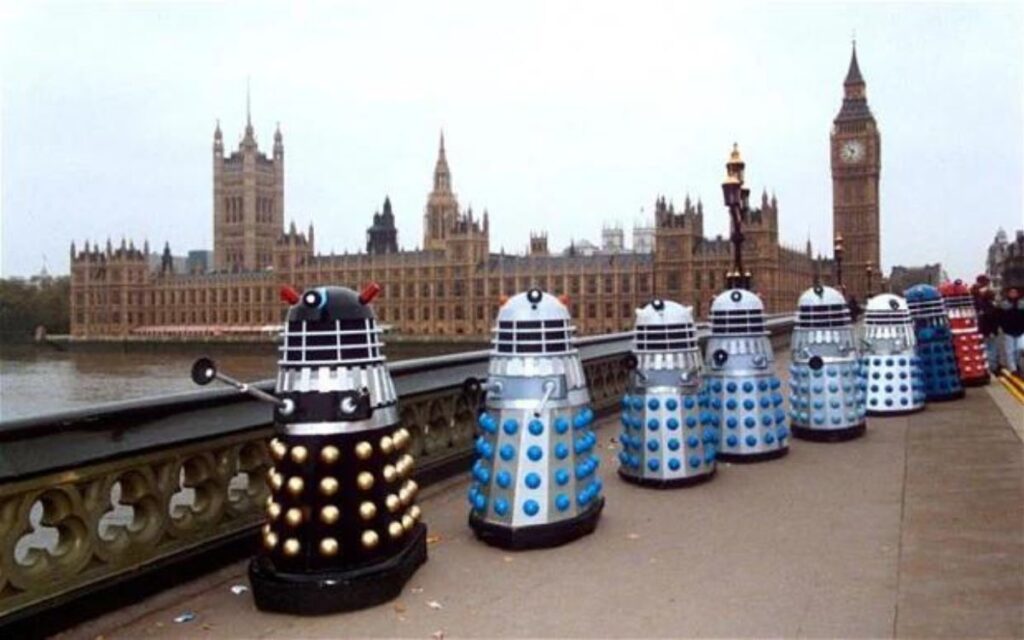
Twenty five years later, in 2002, it was the turn of a zombie apocalypse to blight London. Like Howard Keel in Day of the Triffids, Cillian Murphy, star of Danny Boyle’s cult movie 28 Days Later, wakes in a hospital bed to find London deserted and devastated. On this occasion the hospital is St Thomas’s which sits on the Lambeth side of Westminster Bridge. Murphy’s character, Jim, leaves the hospital and crosses an ominously silent and deserted bridge, littered with refuse. On the other side he encounters an overturned London double decker and is soon being relentlessly pursued by blood thirsty zombies.
The scene from Westminster Bridge looking onto Parliament has long provided inspiration for cover artist depicting scenes for book covers for horror and post-apocalyptic sci-fi novels. Amongst these are City of Fae by Pippa da Costa, Michael Moorcock’s The Whispering Swarm and The Hunchback of Soho by Edgar Wallace. The Sci-Fi Classics edition of HG Wells’ War of the World shows a Martian war machine rising out of the Thames to the side of Westminster Bridge to fire its death ray on Big Ben.
A favourite of mine is the cover of Harry Adam Knights 1985 horror novel The Fungus in which an attempt to solve world hunger results in a deadly fungus that mutates and spreads across England. The book cover shows rampant species of gigantic fungi growing wantonly out of the sides of the Big Ben’s tower.
Film directors too have been keen to use the view from Westminster Bridge to depict mayhem and chaos with Parliament and Big Ben being destroyed completely in movies such as Independence Day, Mars Attacks and V for Vendetta. The tower of Big Ben has been used on a number of occasions to indicate the size of gigantic things.
In Konga 1961, the UK’s answer to King Kong, where a giant gorilla takes revenge on the scientist who created it next to Big Ben. And in Gorgo, made in the same year, the UK’s answer to Godzilla, where a gigantic lizard cages as an attraction at Battersea funfair is rescued by here even more gargantuan mother as she smashed through Westminster Bridge wreaking havoc on her way along the Thames. Recently, facing the other direction from the Bridge, the London Eye has caught the attention of film directors looking for something to destroy.
For example, in the 2007 blockbuster The Fantastic 4: Rise of the Silver Surfer, the heroes do battle with the interstellar villain on and around the Eye. When the film came to London the studio hired one of the pods and media interviews with the cast were conducted as the Eye turned its slow revolutions.
Of course reality can often be far scarier than fiction. In March 2017 Westminster Bridge was the target of a tragic terrorist attack, with four people killed and almost 50 injured. The main attack by a vehicle ramming into pedestrians was followed by the fatal stabbing of a police officer. In March 2020, at the start of the lockdown brought about by the Covid 19 pandemic, many newspapers carried pictures of a desolate and deserted Westminster Bridge, looking every bit as apocalyptic as the fictional scenes depicted in Day of the Triffids and 28 Days Later.
It all makes one wonder whether, if Wordsworth had been alive today to bear witness to such events, both fact and fictional, his sonnet may have taken a much darker tone.
David Turnbull is a writer of short fiction, with stories published in many magazines and anthologies. His near future horror novella HUSks can be found here. His blog “Things That Go Bump in My Mind” connected to the anthologies of the Fiction4All imprint Gravestone Press can be found here.


